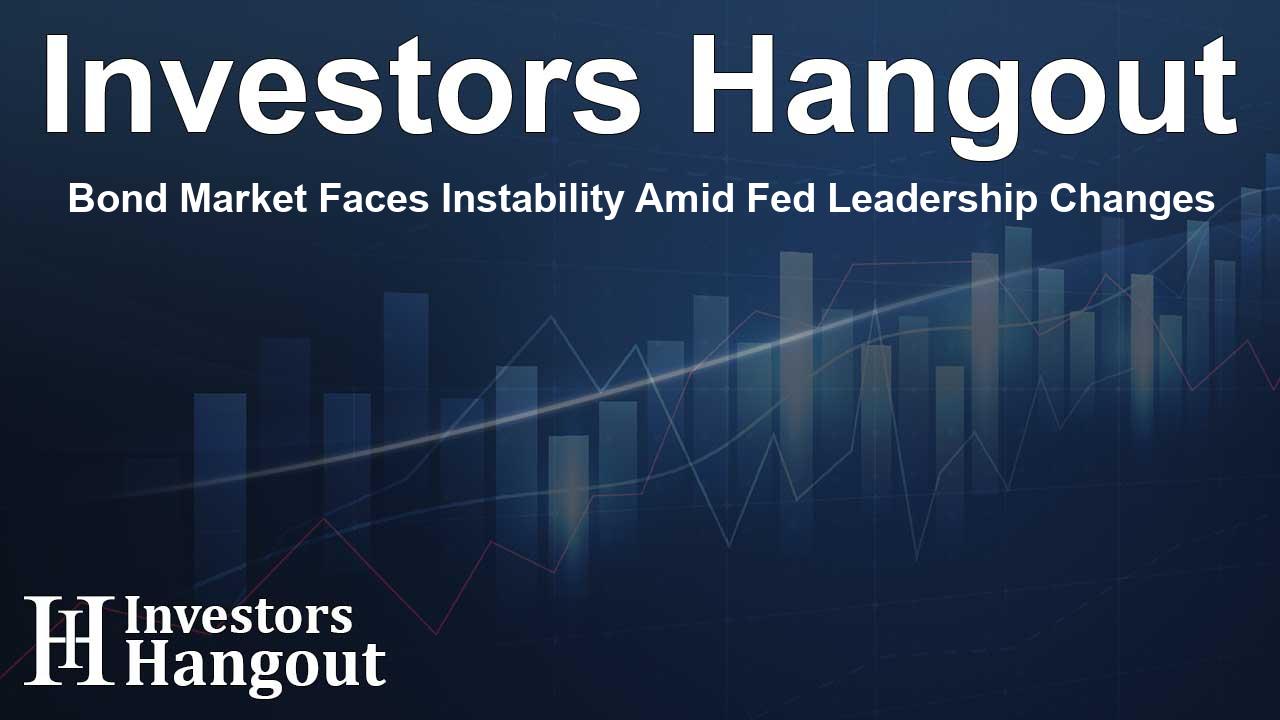Bond Market Faces Instability Amid Fed Leadership Changes

Understanding Bond ETF Vulnerabilities
In recent developments, long-term treasuries faced downward pressure driven by significant changes in the Federal Reserve's leadership. This shake-up has sparked concerns regarding the future direction of monetary policy and the independence of the central bank. Notably, the firing of Federal Reserve Governor Lisa Cook has increased uncertainty among investors, particularly those dealing with bond ETFs.
Market Reaction to Leadership Changes
On the latest trading day, the yield on 30-year U.S. Treasuries rose sharply, reaching 4.94%. This increase signals a growing apprehension about bond investments, especially those tied to longer durations. As a result, the spotlight has turned towards funds such as the iShares 20+ Year Treasury Bond ETF (TLT) and other ETFs tied to government debt.
Key ETFs Navigating Market Dynamics
Several specific ETFs are on the radar amidst these shifts, including TLT, Vanguard Extended Duration Treasury ETF (EDV), and PIMCO 25+ Year Zero Coupon U.S. Treasury Index ETF (ZROZ). These funds are particularly sensitive to yield fluctuations; as yields rise, their prices typically decline. This inverse relationship poses challenges for investors focused on long-term strategies.
The Broader Economic Context
The situation unfolds against a backdrop of potential changes to the Federal Reserve board's composition, which analysts suggest may lean towards a more dovish stance. If this trend continues, it could lead to looser monetary policy, further exacerbating yield curve declines and potentially elevating inflation expectations.
A Glimpse at Market Forecasts
Strategists from Deutsche Bank have raised alarms, citing that if more changes occur within the Fed, particularly with the ousting of current Chairman Jerome Powell, the 30-year Treasury yields could see an increase of over 50 basis points. This speculation has already influenced investor sentiment, as indicated by the widening spread between the five- and 30-year Treasury notes.
Investment Strategies Amid Uncertainty
In light of current conditions, conservative investors might look to short-term bonds such as the iShares 1-3 Year Treasury Bond ETF (SHY) or Vanguard Short-Term Treasury Index Fund ETF (VGSH). These options generally offer safer ground during times of volatility since their price movements are less impacted by long-term interest rate changes.
Preparing for Future Market Movements
With Washington navigating a complex economic landscape, including discussions over a sizable budget package, the upcoming Treasury auctions add another layer of complexity. The optimism surrounding the U.S. credit rating remains, but there are hints from analysts regarding potential institutional risks should the Fed's independence be compromised further.
Conclusion: Staying Vigilant as ETF Investors
For ETF investors, the evolving landscape represents both challenges and opportunities. The potential for increased volatility in bond funds necessitates a tactical approach towards duration exposure. Industry experts highlight the importance of being cautious, as any further restructuring of the Fed could significantly impact the longer-duration ETFs.
Frequently Asked Questions
What triggered the recent turmoil in the bond markets?
The turmoil is primarily due to significant leadership changes within the Federal Reserve, particularly the firing of Governor Lisa Cook, which has raised investor concerns about the central bank's independence and future policy direction.
Which ETFs are currently most affected by rising yields?
The iShares 20+ Year Treasury Bond ETF (TLT), Vanguard Extended Duration Treasury ETF (EDV), and PIMCO 25+ Year Zero Coupon U.S. Treasury Index ETF (ZROZ) are particularly sensitive to changes in yields.
How can investors protect themselves against rising interest rates?
Investors may consider shorter-duration bond ETFs such as iShares 1-3 Year Treasury Bond ETF (SHY) or Vanguard Short-Term Treasury Index Fund ETF (VGSH) as safer alternatives during periods of rising rates.
What are the implications of a more dovish Fed?
A dovish Fed could lead to looser monetary policy, which may contribute to a declining yield curve and higher inflation expectations, ultimately influencing bond market stability.
What strategies should investors adopt in this environment?
Investors should be vigilant and consider tactical adjustments to their bond fund exposure, particularly focusing on duration to navigate the prevailing market uncertainty effectively.
About The Author
Contact Owen Jenkins privately here. Or send an email with ATTN: Owen Jenkins as the subject to contact@investorshangout.com.
About Investors Hangout
Investors Hangout is a leading online stock forum for financial discussion and learning, offering a wide range of free tools and resources. It draws in traders of all levels, who exchange market knowledge, investigate trading tactics, and keep an eye on industry developments in real time. Featuring financial articles, stock message boards, quotes, charts, company profiles, and live news updates. Through cooperative learning and a wealth of informational resources, it helps users from novices creating their first portfolios to experts honing their techniques. Join Investors Hangout today: https://investorshangout.com/
The content of this article is based on factual, publicly available information and does not represent legal, financial, or investment advice. Investors Hangout does not offer financial advice, and the author is not a licensed financial advisor. Consult a qualified advisor before making any financial or investment decisions based on this article. This article should not be considered advice to purchase, sell, or hold any securities or other investments. If any of the material provided here is inaccurate, please contact us for corrections.
